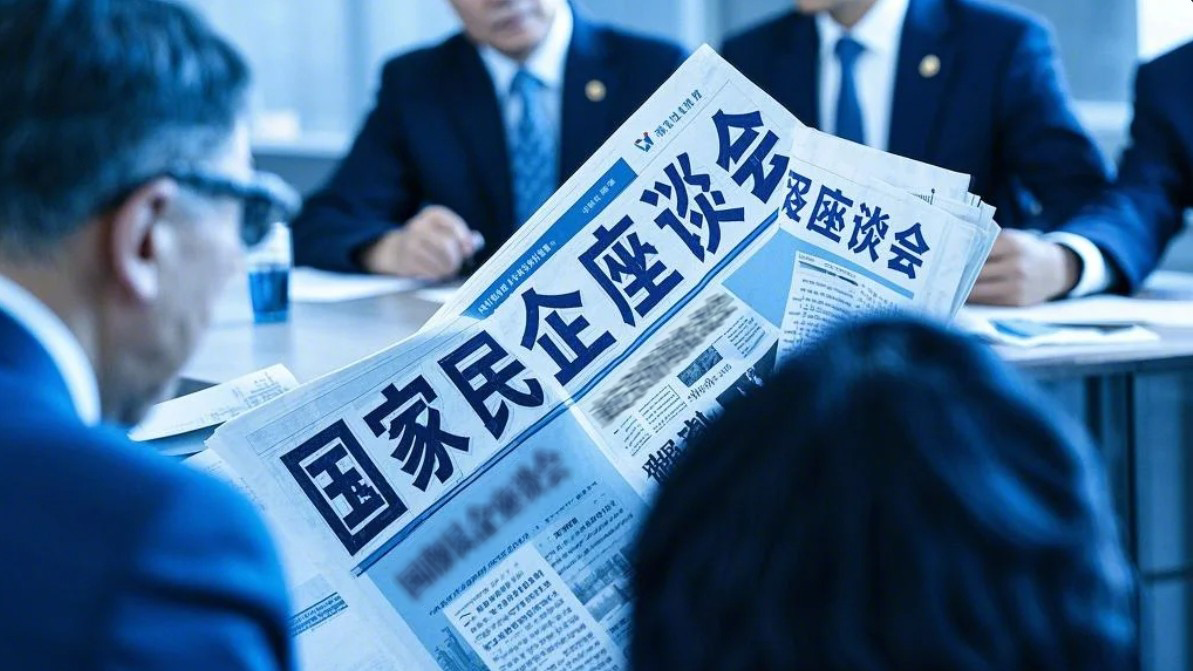
GuShiio.com鼔狮智能 Editor:鼔狮
On February 17, the central government held the highest-level private enterprise symposium in seven years. General Secretary Xi Jinping attended in person and delivered an important speech. Four members of the Political Bureau Standing Committee, including Li Qiang and Ding Xuexiang, were present. This meeting is regarded by the outside world as a weather vane for economic policies in 2025. Especially since it was held half a month before the two sessions, the signal released is directly related to the future policy package.
1. Background and specifications of the meeting
The symposium was of extremely high standards. It was held by the top leader himself and attended by four members of the Political Bureau Standing Committee, including the Prime Minister, which highlighted the importance of the meeting. This is the second symposium held by the top level specifically for private enterprises after 2018. The list of participating companies, focus topics and policy signals have undergone profound changes.
II. How to understand this type of meeting
To understand this type of meeting, you need to pay attention to the following three points:
Look at the situation: Pay attention to the participating companies and their industries and regions to understand the current economic situation.
Look at the trend: Analyze the key points and directions of high-level speeches to grasp future development trends.
Look at the progress: Pay attention to the implementation of policies by ministries and local governments to judge the actual effect of policies.
III. Detailed interpretation of meeting highlights
(I) Look at the situation: Who came and who didn’t
Entrepreneurs and companies participating in the meeting
New energy field: CATL (Zeng Yuqun), BYD (Wang Chuanfu), Xiaomi (Lei Jun).
Artificial intelligence and semiconductor field: Huawei (Ren Zhengfei), Will Semiconductor (Yu Renrong), DeepSeek (Liang Wenfeng).
Network security field: Qi Anxin (Qi Xiangdong).
Agricultural modernization: New Hope Group (Liu Yonghao), Feihe Dairy (Leng Youbin), Muyuan Foods, Denghai Seeds.
Other fields: Alibaba (Jack Ma), Chint Group (Nan Cunhui), Yushu Technology (Wang Xingxing), Tencent (Ma Huateng).
Five significant features compared with the 2018 symposium
Technology attributes are fully upgraded: Hard technology companies such as artificial intelligence, semiconductors, and robots dominate, such as Huawei, Yushu Technology, DeepSeek, and Will Technology, showing that China’s economy has shifted from “scale expansion” to “technological breakthrough”.
Security attributes are more prominent: Four companies in the agricultural field were invited, showing the importance of food security; network security is valued, and the chairman of Qi’anxin was invited and sat in the front row; independent and controllable technology is the core, and Huawei, BYD, and Will Technology form the “independent and controllable iron triangle”.
Deep reconstruction of regional pattern: Among the 14 entrepreneurs in the first row, 4 are from Zhejiang, 3 are from Guangdong and Shenzhen, and 2 are from Beijing, showing a reshuffle of regional competitiveness, such as Zhejiang forming a digital industry cluster, Guangdong focusing on hard technology + platform economy, and Beijing leading security intelligent manufacturing.
Generational change quietly begins: The average age of participating entrepreneurs has dropped from 58 to 47 years old, and entrepreneurs born after 1990 have entered the core circle. The handover between the “first generation of entrepreneurs” and the “first generation of scientists” has been completed, and the young “first generation of scientists and entrepreneurs” has risen.
Internet companies usher in a new positioning: Internet entrepreneurs such as Jack Ma and Pony Ma attended the conference, showing the country’s new requirements for Internet companies to play a more important role in the science and technology game and AI competition.
(II) Look at the trend: What are the key points of the meeting and what is the direction behind it
Institutional guarantee upgrade: Emphasis on incorporating “private economy policies” into the socialist system with Chinese characteristics, from the policy level to the institutional level, showing that the state’s support for the private economy will transcend cyclical fluctuations and become a long-term institutional arrangement.
Clear innovation orientation: Emphasis on “the endogenous driving force of enterprise development is the first priority”, encouraging private enterprises to make new breakthroughs in basic research, and complementing the new national system. Huawei, BYD and other companies’ independent research and development models have been officially recognized.
Rebuilding the business environment: Pointing out that it is necessary to solve problems such as difficult and expensive financing and arrears of corporate accounts, strictly investigate random charges and fines, and remove obstacles to the use of production factors, showing that new energy, data factors and other fields may be further opened to private enterprises.
New thinking on globalization: Encourage enterprises to “go overseas to seize global discourse power”, such as CATL’s Hungarian factory and Huawei’s Euler system promotion, showing that Chinese private enterprises have shifted from product exports to standard output.
(III) Progress: Implementation by ministries and local governments
Supreme Court: On February 17, 6 typical cases of corporate reputation protection were released, the red line of corporate reputation was drawn, and the judicial gap of reputation protection in the digital economy era was filled.
Supreme People’s Procuratorate: On February 18, a tough action was deployed to establish a “red, yellow and blue” early warning mechanism for enterprise-related cases, develop a big data model for clearing “pending cases”, and promote the clearing of 1,342 backlog cases involving enterprises across the country within three months.
National Development and Reform Commission: It stated that it will revise and issue a new version of the negative list for market access as soon as possible, implement the “entry unless prohibited” requirement, continue to promote the fair opening of competitive infrastructure fields and major national scientific research infrastructure to private enterprises, support private enterprises to participate in the “double-heavy” construction and “two new” work, and speed up the progress of clearing arrears.
Ministry of Industry and Information Technology: It stated that it will promote the introduction of more inclusive and targeted policy measures, protect the legitimate rights and interests of small and medium-sized enterprises in accordance with the law, support small and medium-sized enterprises to participate in national talent projects and introduce high-level talents.
IV. Meeting Schedule Intention
This private enterprise symposium was held half a month before the two sessions in March. The important speeches at the meeting are likely to be reflected in the government work report of the two sessions, and some contents that need to go through legal and approval procedures can also be completed during the two sessions.



